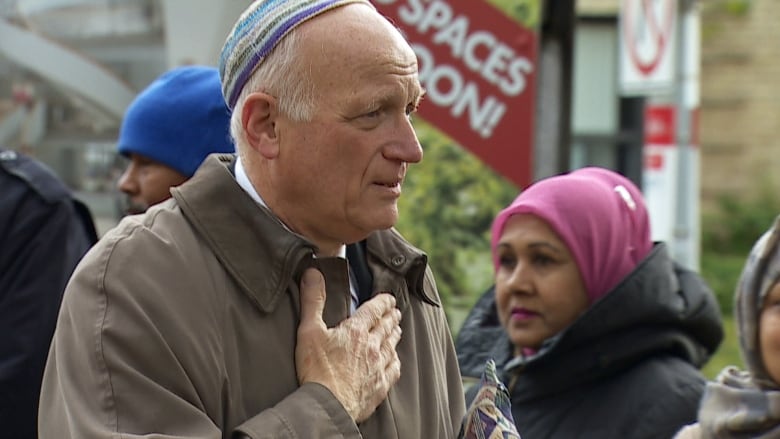Homes of Refuge: Women’s Shelters in Afghanistan
by Eric Wilson
Women’s Voices Now
I first experienced the capital city of Kabul in the spring of 2013 while serving in Afghanistan as a U.S. Army officer. Though I was not primarily deployed to Kabul, the short time I spent there made a lasting impression on me. Flying into the city, one cannot help but notice the towering mountains of the Hindu Kush surrounding the sprawling urban terrain. Thousands of drab-colored buildings make up the city center, and on the outskirts in every direction are vast shanty towns. At the street level, the avenues are cramped and lively with merchants selling their goods, cab drivers incessantly honking their horns, women running errands with young children in tow, and men working or looking for work. Apart from this vibrancy, the signs of nearly three decades of war are strikingly evident: dilapidated buildings, widespread poverty, and countless numbers of unemployed men.
Yet, Kabul remains the most secure and progressive city in the country. Serving as the headquarters for both coalition forces and the Afghan government, the urban center and the surrounding province have existed under a security umbrella since 2001, allowing foreign and domestic humanitarian organizations to thrive. One such humanitarian effort has been the development of women’s shelters throughout the city and, to a lesser extent, the country. I first became aware of these shelters when I asked a fellow soldier in Kabul about a nearby building surrounded by high concrete walls and patrolled by a solitary Afghan guard at its gate. I was told that the building was a women’s shelter and that the hired sentry was there to protect the women inside from the threat of vengeful spouses, family members, and religiously conservative zealots, all of whom may see the women’s choice for sanctuary as defiant of tribal or religious laws. Watching burqa-clad women from the shelter pass in and out of the front gate, I always felt sorrow for them. Though I could not see their physical wounds, I knew each of them had suffered greatly.
Upon leaving Kabul, heading toward my duty location in eastern Afghanistan, I spent some of my free time researching the shelters on the Internet. Curiosity, reinforced by concern for what would become of the women at the Kabul shelter, propelled me.
Women’s Shelters: A Closer Look
Since the fall of the Taliban regime in 2001, women in Afghanistan have made small gains toward gender equality and basic human rights. One cannot stress how difficult it has been to achieve such progress thus far. Based on my experiences with Afghan men—tribal leaders, commoners, Afghan soldiers, and police, etc.—any mention of women’s issues, especially in official dialogue, is likely to bring about apprehension and scorn. A common argument claims that, as hard as one might try to make traditional Afghans understand gender equality, the majority will continue to see the concept as “of the West” and not of their own cultural or religious heritage, thus opposing it outright or treating it with grave distrust.
In the cities where NATO and non-governmental organization (NGO) presence have been the strongest, these areas have been most open to progressive ideas concerning human rights. In 2009, an unprecedented law was passed by the Afghan government—with much pressure from the international community—that illegalized rape, child marriage, forced marriage, and denial of rights for work and education of women. Though this decree remains secondary to traditional family codes and strict interpretations of Shari‘a law, the decree has allowed agencies such as the women’s shelters to thrive in their mission.
Today the number of shelters remains small. Less than two dozen shelters are located throughout the country, with the majority in Kabul. This can be attributed to the fact that the Afghan laws which protect women are best enforced in the capital, especially with the oversight and security provided by international coalition forces. Kabul and its environs are also the headquarters for most of the humanitarian organizations based in the country and, logistically speaking, it is where supplies and aid workers arrive daily by way of the Kabul International Airport. The further one gets from the government-controlled areas of Afghanistan, the more radically conservative and dangerous the country becomes. Outside the government security umbrellas the Taliban insurgency thrives, violence between tribal factions is rampant, and strict adherence to Shari‘a law and tribal codes thrive. With this being said, shelters for women will likely remain an urban phenomenon.
The first shelters were established as refuges for women escaping abusive relationships or protecting their children from the same abuse. Some of these women had endured years of torture from their husbands or male members of their own family. Other women had run away from arranged marriages to men whom they knew would abuse them, or marriages to much older men—a common fear among young girls forced into union.
According to tribal codes, the penalty for fleeing one’s home without a male escort could be death; running from a marriage—especially taking one’s children with her—could result in an honor killing. In Afghanistan, children are always the property of the husband. Often, divorce leaves women without their children and with the knowledge that their children will live with their potentially abusive father.
It also happens that husbands throw out wives who have dared to seek out sanctuary. This is sometimes the case in Afghanistan when a man can no longer provide for his family, or when he otherwise tires from the obligations of being a husband. When a woman is driven out of the home, it can be a dangerous road for her. She faces everything from starvation and poverty to slavery in the form of forced prostitution.
The Afghan NGO, Women for Afghan Women, was founded in April 2001 and was one the first of its kind to protect the rights of women and girls. Women for Afghan Women has received support worldwide and keeps eight offices in Kabul, with an additional office in New York that coordinates support for the shelters abroad. The shelters that Women for Afghan Women operates have taken in such women and girls, and their children, and have protected them from these harsh conditions.
Opposition to the Shelters
Women’s shelters have attracted the ire of conservative politicians who seek to enforce ultra-traditional Muslim values derived from Taliban-type interpretations of Shari‘a law. These politicians are not alone in their hatred for such shelters; family members and vengeful husbands eager to enact an honor killing, or simply bring the women back home, all oppose the institutes as well. This disdain reached the floor of the Afghan Parliament in 2011 when a bill allowing the Afghan government to take control of the women’s shelters was introduced. If it had become the law, the bill would have mandated that all women and girls in the shelters plead their individual cases before a government panel likely presided over by conservative members of the Afghan Ministry of Justice. The panel would then decide if the girl should remain in a then-government controlled shelter, be sent to jail, or returned to her former home where she may face continued abuse or death in an honor killing. Additionally, all women in shelters would be required to undergo examinations to determine if they were having sex; of course, these tests would not be medically genuine. If a woman in a shelter were determined to be sexually active, she would be charged with adultery in an Islamic court. Last but not least, should the panel determine that a woman could stay in the shelter, she would have to remain there for life without hope of ever remarrying or reintegrating into society; should she defy confinement, she would go to prison.
The international outcry against this bill was loud, with many major news sources and academic journals such as Reuters, Foreign Affairs, and Al Jazeera reporting on this story. Former Afghan President Hamid Karzai was repeatedly harassed about the bill, which eventually failed. He repeatedly commented that he felt pressured by the United States to uphold values not shared by the majority of his Afghan support-base. Karzai also claimed that the United States was telling him how to run his government; toward the end of his presidency in 2014, he earnestly sought to wrest full control over politics, the security situation, and civil society away from U.S. and NATO influence.
While the Afghan government possesses the right to self-determination, Karzai’s actions belied his greater interest in appeasing the United States while trying to maintain support from opposite-minded forces within the Afghan government, whose ranks continue to be filled with powerful and misogynistic warlords. Karzai’s presidential term has since expired, replacing his begrudging support of U.S.- and NATO-promoted values with that of the less established—but professedly like-minded—Ashraf Ghani. Though the bill to take control of these shelters did not pass into law, Karzai’s exit from office and the constant influence of ultra-conservatism in the government put these shelters under constant threat.
The Way Ahead
In office since September 2014, President Ashraf Ghani Ahmadzai appears to be a moderate who, like Karzai, promotes and maintains notions of Western civil rights and gender equality while struggling to appease the traditional warlords who control much of the country. It seems that Ghani welcomes the NATO withdrawal but is still very open to certain measures of Western security and humanitarian aid; he would like to see Afghanistan maintain Muslim values while embracing aspects of modernization.
It is difficult to learn in what ways the women’s shelters have been affected by this regime change, but one can deduce that women’s shelters are indeed still functioning. I was able to come to this conclusion by visiting Women for Afghan Women’s website (www.womenforafghanwomen.org), which states their current ongoing projects with the shelters and their continued hope to expand shelters to other provinces.
While at a conference in London in January 2015, President Ghani stated, “The West loves to talk about the rights of women. Could you match it, please, with some practice with us? We are willing. Will you partner so that we get real empowerment of women?” President Ghani, who is Western-educated and whose Lebanese-Christian wife has been a great advocate for human rights, seems to be hopeful for Afghanistan’s future. Progress, however, depends on his strong leadership during this transition period, the continued promotion of basic rights and education for women, and resistance to the pressures and corruption of the Taliban-influenced factions.
Considering the NATO withdrawal and the declining security situation in Afghanistan, it is likely that the president may soon be obligated to dedicate funding and resources to the military, away from civil society. If this happens, NGOs may have a more difficult time operating due to security threats and lack of civil protection. Donations given to Women for Afghan Women through their website will continue to help keep the organization running and ensure that the women, girls, and children in the shelters remain protected and provisioned. Such donations fund classes, workshops, food, and clothes.
Although I left Afghanistan in the early summer of 2013, my heart continues to go out to the women I saw at the shelter in Kabul. I urge those who read this to make others aware of these women’s situations in the shelters and, if they can, to support Women for Afghan Women in their mission.
Editor’s note: Eric Wilson is currently serving as an officer in the U.S. Army. He holds a master’s degree in Middle Eastern studies from Tel Aviv University and a bachelor’s degree in political science from Marquette University. From mid-2012 to mid-2013, he served in Afghanistan under the U.S. Army Special Operations Command. His interests include security studies, foreign internal defense, and counter-terrorism. His views are his own.















2015
1,177 views
views
0
comments